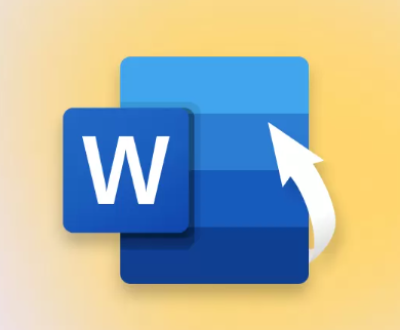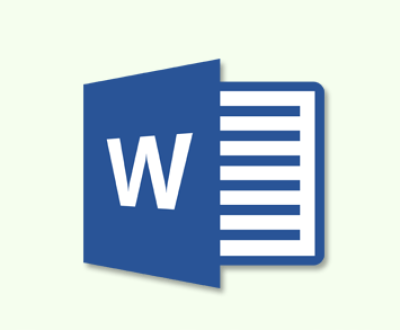Losing a Word document can be frustrating and concerning. There are several reasons why this might happen, ranging from user error to software issues. Here’s an in-depth exploration of potential causes and remedies.
1. Accidental Deletion
Unintentional Deletion: It’s easy to accidentally delete a file. If you pressed the delete key or selected the document and chose “Delete,” it might be in the Recycle Bin.
Check the Recycle Bin: Open the Recycle Bin on your desktop. If the document is there, right-click it and select “Restore.”

2. Saving Issues
Unsaved Changes: If Word crashed or closed unexpectedly, your changes might not have been saved.
AutoRecover Feature: Word has an AutoRecover feature that saves your work at intervals. If you reopen Word after a crash, it should show a Document Recovery pane with unsaved files.
3. File Location Confusion
Wrong Directory: You might have saved the document in a different folder or drive than you remember.
Search Functionality: Use the search bar in Windows Explorer or Finder to look for the file by name or file type (e.g., *.docx).
4. Hidden Files
File Hidden Settings: Sometimes, files can be marked as hidden, making them invisible in normal viewing modes.
Adjust Settings: To view hidden files, open File Explorer, go to “View,” and check the “Hidden items” box.
5. Software Glitches
Word Software Errors: Occasionally, Word may experience glitches that can lead to files not appearing.
Update Word: Ensure your Word application is up to date. Go to “File,” then “Account,” and select “Update Options.”
6. Corrupted Files
File Corruption: If the document is corrupted, it might not open or appear.
Open in Safe Mode: Try opening Word in Safe Mode by holding down the Ctrl key while starting Word. This can sometimes bypass issues related to add-ins.
7. Virus or Malware
Malicious Software: Some malware can hide or delete files.
Run a Virus Scan: Use antivirus software to check for and remove any threats.
8. Cloud Storage Issues
Sync Problems: If you’re using OneDrive or another cloud service, syncing issues may prevent your document from appearing.
Check Cloud Service: Log in to your cloud account and check if the document is there. Ensure syncing is enabled.
9. Changes to File Extensions
Renamed Files: The file extension might have been changed unintentionally, making it unrecognizable to Word.
View File Extensions: Make sure your operating system shows file extensions, and check if the document is there with a different extension.
10. Recovery Options
Manual Recovery: Look for temporary files that Word creates. They typically have a .tmp extension.
Using Backup Versions: If you regularly back up your files, check your backup system for the lost document.
Steps to Recover Your Disappeared Document
Step 1: Search for the Document
Use the search bar on your operating system. Search by the document name or keywords from within the document.
Step 2: Check Recent Documents
Open Word and go to “File” > “Open” > “Recent.” This might display the last files you accessed.
Step 3: Use Document Recovery
Restart Word after a crash. The Document Recovery pane might show your unsaved files.
Step 4: Look in Temporary Files
On Windows, look in the temp folder (C:\Users[YourUsername]\AppData\Local\Microsoft\Windows\INetTemp) for .tmp files.
Step 5: Restore Previous Versions
Right-click on the folder where the document was saved and select “Restore previous versions.” This might bring back earlier versions of files.
Step 6: Use Data Recovery Software
If none of the above work, consider using third-party data recovery software designed to recover lost files.
Preventing Future Loss
To avoid losing important documents in the future, consider these best practices:
Enable AutoSave: If using Office 365. enable AutoSave for real-time saving.
Regular Backups: Use an external hard drive or cloud storage to back up important files regularly.
Create Copies: Save copies of important documents in different formats or locations.
Stay Updated: Keep your Word software updated to prevent glitches.
Educate Yourself: Familiarize yourself with Word’s recovery options and features.
Losing a Word document can be a distressing experience, but understanding the potential causes and recovery methods can help alleviate the situation. By following the outlined steps, you can increase the chances of recovering your lost document and implement strategies to prevent future losses. Whether through accidental deletion, software issues, or file corruption, knowing how to address these problems is crucial for any user of Microsoft Word.
About us and this blog
Panda Assistant is built on the latest data recovery algorithms, ensuring that no file is too damaged, too lost, or too corrupted to be recovered.
Request a free quote
We believe that data recovery shouldn’t be a daunting task. That’s why we’ve designed Panda Assistant to be as easy to use as it is powerful. With a few clicks, you can initiate a scan, preview recoverable files, and restore your data all within a matter of minutes.
Subscribe to our newsletter!
More from our blog
See all postsRecent Posts
- How to recover accidentally deleted files 2025-07-01
- How do i recover a file i accidentally deleted 2025-07-01
- How to recover an accidentally deleted file 2025-07-01

 Try lt Free
Try lt Free Recovery success rate of up to
Recovery success rate of up to









